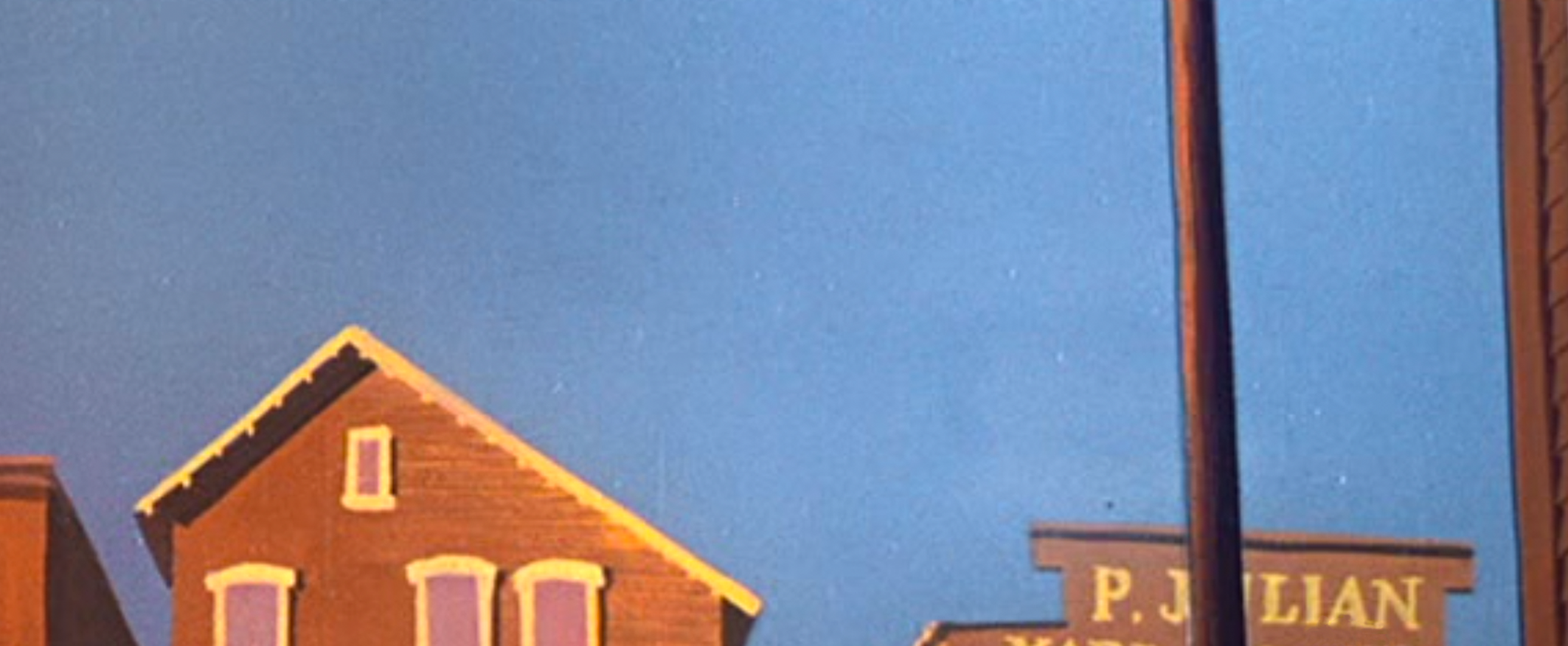Now we're nearly done. I like Paul very much by the way, and I want for you to like him too, very much. I don’t know a lot about him, but that’s not how it works anyway and all I need to know is that I do know how he paints me. There’s another guy, Hawley, who draws me up and puts all my pieces in place, which is important, but then he gives me to Paul and Paul gets to be the one to paint me. Paul starts slow, puts some layers down, light, and he keeps it clean like he’s working with water but actually its these thick type paints that some of the other guys get all dragged up into the paper and it clogs and keeps you pressed down. Paul keeps it light. Then he puts some more down in layers, and then you end up with light paint on light paint until my town and all the rest of it comes up nice. My colours are bright, even with the watery touch, and there’s a lot of light and a lot of shadows.
Exploring the life of Paul Julian through that which bears either direct or indirect traces of his existence allows us to access a version of history which draws on notions of space, image, proximity, absence, and painterly history. It gives us, however, little insight into the logistical, everyday, ‘documental’ aspects of Julian’s life. These facts I might eventually find elsewhere, but due to the unreliability of sources and the lack of accessible documentation, the real and whole truth becomes essentially impossible to know.
Some other people like Paul nearly as much as me. Paul likes to paint streets, sometimes. Dark, rainy nighttime. Sometimes. “The streaks of varicolored lights from store windows and traffic lights reflected in the puddles make for most intriguing patterns, much more interesting than the same street when there has been no rain and the various lights are not reflecting in anything.” Shamus Culhane, he’ll say that one. And then he’ll say: “What it indicates is again a certain kind of thinking. Paul Julian was not painting a stereotype of a street. He was looking for a chance to depict one special street.” I really like when he’s going to say that because Paul does make it special. My special street, in my special town. Everyone likes to feel special sometimes. Paul does that for me. The places get real, and I get to be them, and live there but not there, and the places get to be there too. Sometimes I like to think him a thank you.
The spaces, gaps, holes, and abandonments we find within the factual outline of his life are barriers to the ontological order of knowledge. For the hauntologist, however, the torchlight of attention – when it is trained on the hole-filled landscape of a life half forgotten – is refracted through the apertura, and a picture of a life begins to build up. Absence takes centre stage and is surrounded, is housed, by a person’s work, by their output. Their name, placed first in a corner as a signature or as an inside joke, is repositioned, and the emptiness which once felt solid and unmovable suddenly buckles in order to make space. Paul Julian’s life – its images, its internal structures, its locations – can be known and traversed via a direct engagement with the visual and informational absences which form our present understanding of his place in the world. His life and work, and the story of both, might stand to resist the ontological decay of non-presence and instead flourish under – and because of – the circumstances and effects of absence.
